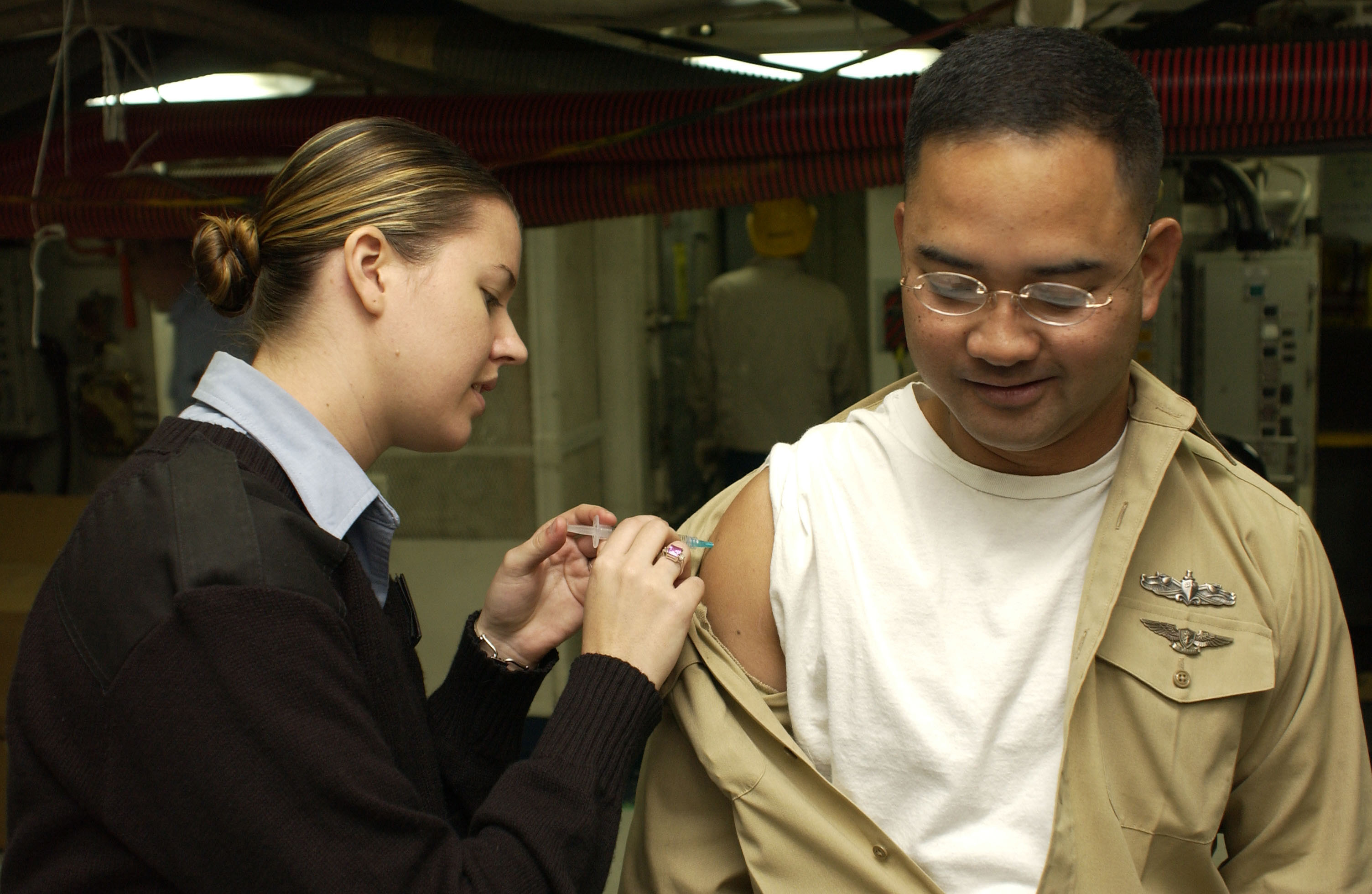
Influenza vaccine
Influenza vaccines, colloquially known as flu shots, are vaccines that protect against infection by influenza viruses.[12][13] New versions of the vaccines are developed twice a year, as the influenza virus rapidly changes.[12] While their effectiveness varies from year to year, most provide modest to high protection against influenza.[12][14] Vaccination against influenza began in the 1930s, with large-scale availability in the United States beginning in 1945.[15][16]
Vaccine description
inactivated, attenuated, recombinant
Afluria, Fluarix, Fluzone, others
- none
Both the World Health Organization and the U.S. Centers for Disease Control and Prevention (CDC) recommend yearly vaccination for nearly all people over the age of six months, especially those at high risk,[12][17][18][19] and the influenza vaccine is now on the WHO's List of Essential Medicines.[20][21] The European Centre for Disease Prevention and Control (ECDC) also recommends yearly vaccination of high-risk groups,[22] particularly pregnant women, the elderly, children between six months and five years, and those with certain health problems.[12][19]
The vaccines are generally safe, including for people who have severe egg allergies.[23] A common side effect is soreness near the site of injection. Fever occurs in five to ten percent of children vaccinated, and temporary muscle pains or feelings of tiredness may occur. In certain years, the vaccine was linked to an increase in Guillain–Barré syndrome among older people at a rate of about one case per million doses.[12] Influenza vaccines are not recommended in those who have had a severe allergy to previous versions of the vaccine itself.[12][23] The vaccine comes in inactive and weakened viral forms. The live, weakened vaccine is generally not recommended in pregnant women, children less than two years old, adults older than 50, or people with a weakened immune system.[12] Depending on the type it can be injected into a muscle, sprayed into the nose, or injected into the middle layer of the skin (intradermal).[12] The intradermal vaccine was not available during the 2018–2019 and 2019–2020 influenza seasons.[24][25][26]
Seasonal flu vaccines are available either as:
TIV or QIV induce protection after injection (typically intramuscular, though subcutaneous and intradermal routes can also be protective)[147] based on an immune response to the antigens present on the inactivated virus, while cold-adapted LAIV works by establishing infection in the nasal passages.[148]
Cost-effectiveness[edit]
The cost-effectiveness of seasonal influenza vaccination has been widely evaluated for different groups and in different settings.[216] In the elderly (over 65), the majority of published studies have found that vaccination is cost saving, with the cost savings associated with influenza vaccination (e.g. prevented health care visits) outweighing the cost of vaccination.[217] In older adults (aged 50–64 years), several published studies have found that influenza vaccination is likely to be cost-effective, however the results of these studies were often found to be dependent on key assumptions used in the economic evaluations.[218] The uncertainty in influenza cost-effectiveness models can partially be explained by the complexities involved in estimating the disease burden,[219] as well as the seasonal variability in the circulating strains and the match of the vaccine.[220][221] In healthy working adults (aged 18–49 years), a 2012 review found that vaccination was generally not cost-saving, with the suitability for funding being dependent on the willingness to pay to obtain the associated health benefits.[222] In children, the majority of studies have found that influenza vaccination was cost-effective, however many of the studies included (indirect) productivity gains, which may not be given the same weight in all settings.[223] Several studies have attempted to predict the cost-effectiveness of interventions (including prepandemic vaccination) to help protect against a future pandemic, however estimating the cost-effectiveness has been complicated by uncertainty as to the severity of a potential future pandemic and the efficacy of measures against it.[224]